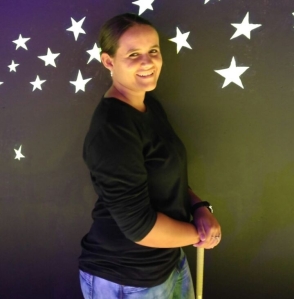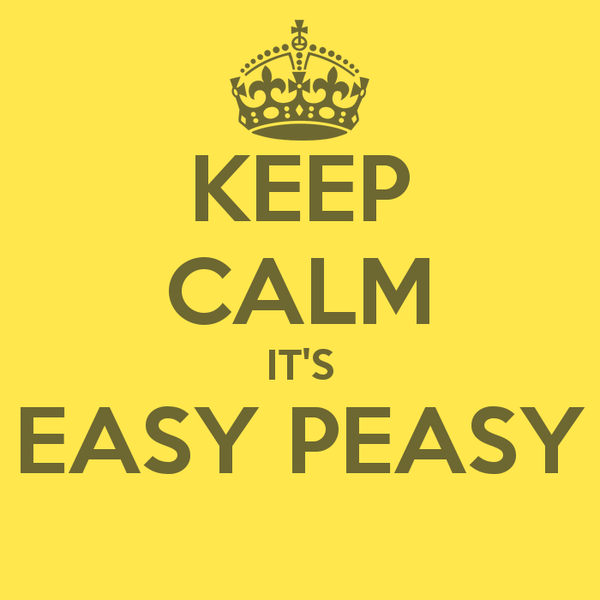We’re on the 3rd of October already, which means we have 29 days left before NaNoWriMo! Can I cue the panic yet? No? Okay, we’ll save it for the third week of October.
In the spirit of Plotober, I’ll be posting irregular planning sessions just about every day. (Which basically translates to: I’m trying to develop my planning ability beyond that of wishful thinking so I’m dragging you along for the ride. You’re welcome.)
Also in the spirit of blogging about this, I’m linking up to Top Ten Tuesday for this post because Cait over at PaperFury has inspired me with her exquisite blog and the numerous giggles her wicked sense of humour induces.
The topic for today is Top Ten Book Boyfriends/Girlfriends, but I’ll be breaking the rules for that by instead giving you ten tips for creating a character who your readers will WANT to friend. This ties in nicely to my planning for NaNo, because I use these methods when I create characters for my novels.
Also, if you manage to stick around for all ten items without wandering off like a lost puppy, I’ll treat you to a character interview I did with one of my favourite people in the whole wide world – Jarrod from When the Earth Grows – Book One of the Ólarunàe.
Onward then!

- Names are not that important, except when they are. I know, I know. A lot of writers tend to come up with names for their characters before they even decide anything else. There are pros and cons to this which I’ve summarised in a nice little table for you:
| Pros |
Cons |
| Defining – names provide a basis to define the culture, language and history that your character comes from. The meaning in a name provides a frame of context for their growth. |
Limiting – names imply a culture, a language, a history. They have meaning and giving meaning to a character before knowing who they are in the novel can constrict their growth. |
| Reference – knowing your character’s name before writing, allows ease of reference when plotting. |
Stereotyping – giving your protagonist a name you like, or the antagonist a name you don’t like, automatically creates stereotypical associations which you may prefer to avoid. |
| Allows for surprise – by making assumptions about your character based on their name, they can surprise you with traits they present in the process of writing. |
Removes the element of surprise – just as assumptions allow for surprise, they also remove the opportunity to be surprised because you may find yourself subconsciously editing your character to ensure they fit into your image of their name. |
- Traits do not a character make. Yes, the general personality traits go into creating a character and may decide how they react to certain events or other people. They aren’t the deciding factors in who your character is. A trait is something like shyness – a character may be shy, but he won’t necessarily let it stop him from talking to his crush. In fact, he may even be more determined to overcome his shyness by talking to them. List your basic character traits, and then decide which of these will be allowed to influence the character, and which he/she will fight against, or even develop as the story progresses.
- Characters do not always react consciously. Just as in real life, when someone annoys you, your normal reaction is to snap back at them. Unless you’re a saint or supremely patient or avoid conflict at all costs. Likewise, characters will react to people and situations instinctively, consciously or in a way that they think is expected of them. Conflict is created by putting them in situations where they react unexpectedly, or where their reaction results in an internal conflict. Creating scenarios and dropping characters into them gives you a chance to see how they respond.
- Flaws don’t always make a character relatable. Writers often preach that characters need flaws. This is true. But giving a character flaws doesn’t automatically make them relatable. What it does do is create an opportunity for the character to either overcome or accept their flaws, either consciously or unconsciously. This then allows the reader to respect them regardless of whether or not they agree with their choices. An example of a character flaw is having a highly motivated person taking control of everyone’s lives and trying to dictate to them.
- Quirks are not always endearing. Just as with flaws, creating a character with a quirky habit that they perform every five sentences can grate on the nerves. They serve a purpose by allowing the reader to differentiate between the mannerisms of characters, but if that’s the only thing you’re creating to differentiate between John and Joe, you need to rethink things.
- Weird spelling/hard to pronounce names do not a unique character make. Spelling a common name phonetically, or with a y in place of an i doesn’t make your character stand out or give them magic powers. Yes, it may help the reader remember your character, but not necessarily in a good way. If you’re going to do this with your character names, try to remain consistent throughout – replace all i-s with y-s in names where it’s applicable for example. Alternatively, come up with a logical reason for it – perhaps their parents were hippies with no appreciation of how cruel children can be. In genres like sci-fi or fantasy, the development of names can be a lot of fun, but be careful how you go about this. Remain consistent to the rules of your language.
- Culture plays a big role in characterisation. Knowing the race and culture of your character, whether from our world or your created world, helps to determine how they react to certain situations. Deciding on this before you write allows you to decide how much of a role culture and race will play in your plot.
- Age is not just a number. Not in character creation anyway. A five year old will not use words that a 16 year old would. Likewise, the 80 year old grandmother wouldn’t necessarily be up to date on all the slang the 16 year old spews. Additionally, a five year old (hopefully) won’t be smoking cigarettes on the street corner and waiting for her no-good boyfriend to show up. A 16 year old might, but she’d also be a bit nervous about her rebellion, or angry at the whole world for putting her in that position in the first place. Make sure your character’s age matches the plot that they’re going to find themselves in.
- Secondary characters are not just there to support your MC. That may be their main role in the story, but it doesn’t mean they should be cardboard cut-outs. Their relationship with your MC is vital to creating a believable, relatable character. As such, they need to challenge, support and add to the growth of your MC. If they don’t do any of that, they don’t need to be in the story. Decide on the potential relationships before you start writing and allow your secondary characters to shine a little.
- Don’t be scared to create a character who challenges perceptions. Characters don’t need to be likeable to be liked. An absolutely villainous character who targets children may still be liked by readers because he completely defies what is acceptable by the standards of modern society. Not everyone likes children (gasp!), so allowing your character to challenge the dictates that children are precious little bundles of joy, gives you a situation ripe for conflict and character growth. Bear in mind though, that challenging perceptions doesn’t mean breaking laws of nature. A villainous psychopath targeting children because he was bullied at school won’t suddenly have a change of heart because he meets a child who loves him. He’ll keep doing what he does, he just won’t do it to that child.
That’s it for the ten tips to creating heart-worthy characters. Here’s the promised bonus of character interview I did with my character, Jarrod – to try and flesh out some of the above. (For those of you new to this technique, a character interview allows you to ask questions and answer them in 1st person from the POV of your character.)
How do you feel about your sisters, Mali and Wren?
You mean the terrible twins. I don’t want to talk about them.
Why not?
Because they’re brats, that’s why. Mother keeps blaming me for the mischief they get up to, as if I have any control over what they do. The other day, they dumped manure into the animals’ drinking water. Guess who got to clean it up? Me, that’s who. And then Mother scolded me for allowing them to do it! Sometimes I wish they weren’t my sisters.
So you want them dead?
No! Of course not! I just, I don’t want to be responsible for babies anymore. That’s a woman’s job.
A woman’s job?
Yes. Cooking, cleaning, watching the children. Making a home for her family.
So you don’t think women can do what men do?
I didn’t say that. Mother is the strongest person I know. I can see how Father relies on her. But she’s responsible for the children, while Father gets to go hunting and be a man. I wish he’d take me with him sometimes.
Why doesn’t he?
He will when I reach my thirteenth birthday. It’s only a few months away and then Kiro can take over watching the twins. I can’t wait! Just, uh… don’t tell Mother I told you this, okay? She’d have my guts for garters if she found out I said that stuff about women.
I love what this interview reveals about Jarrod. He’s obviously a closet chauvinist- which isn’t necessarily a bad thing, but may lead to conflict as he gets older. He loves his sisters, but also – siblings. Ugh. His mother is the strongest person he knows, so even though he’s a chauvinist, he still respects women and believes that they can be strong and independent. These are aspects that I can definitely play with as he grows up in the story.
How do you feel about character creation? Do your characters ever surprise you? Share your favourite characters and link me back to your TTT if you’re taking part!





